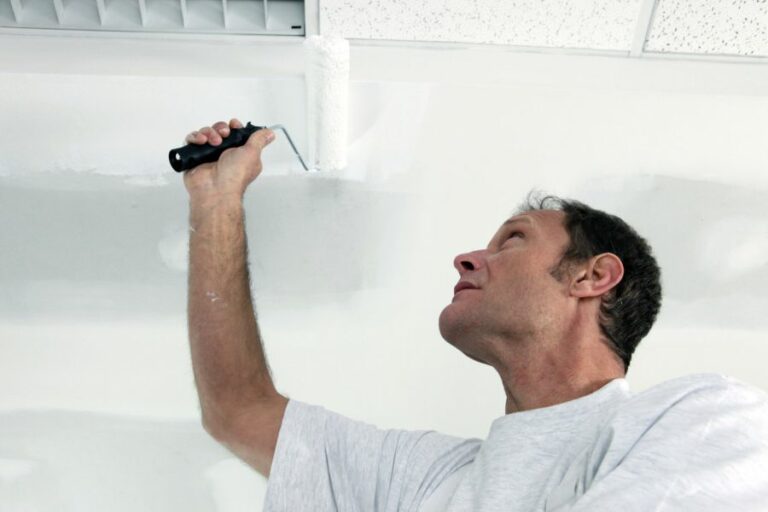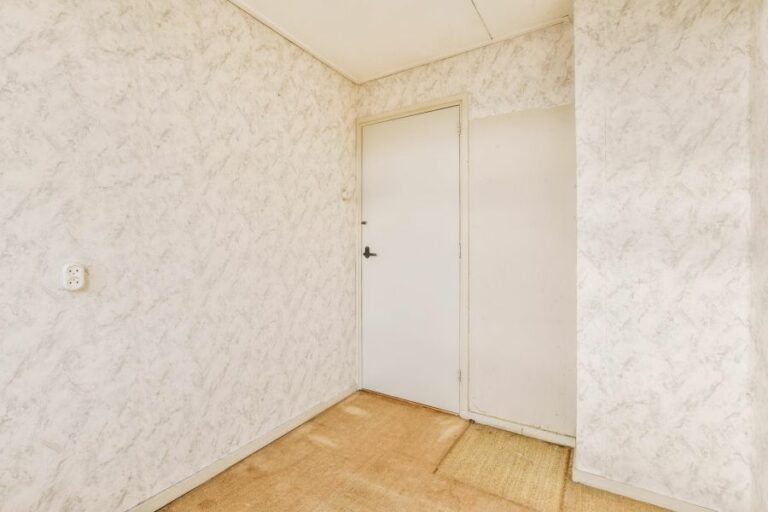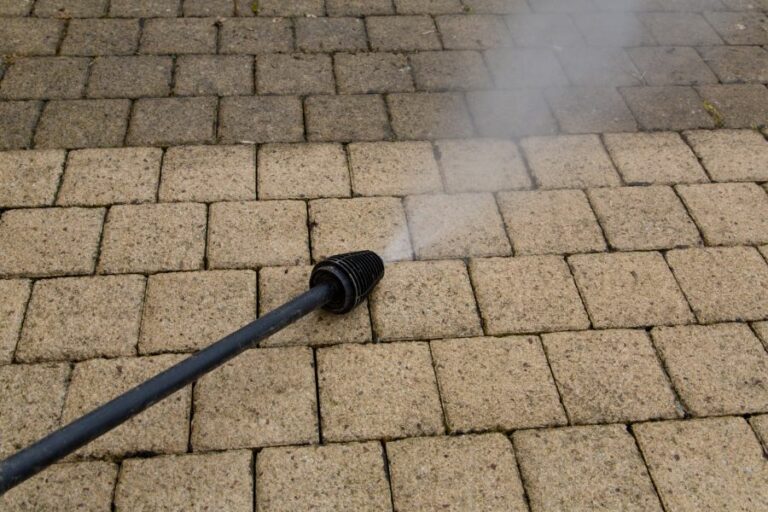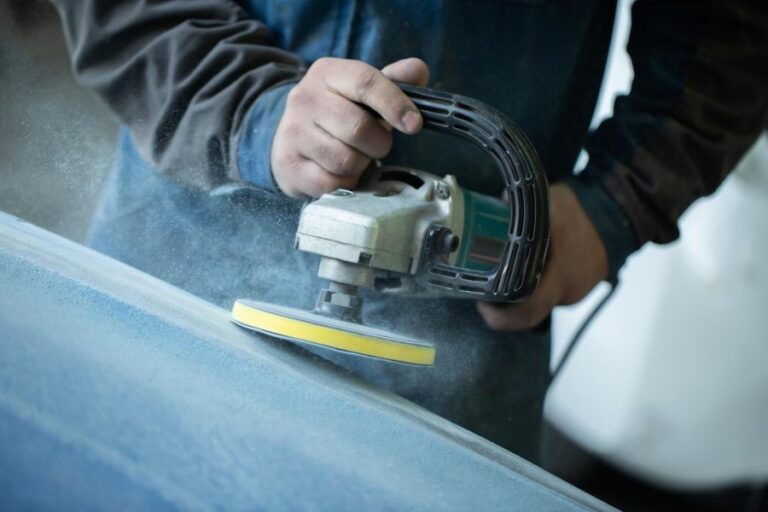Managing Moisture Risks In Surface Preparation. What Pros Say
As experts in surface preparation, we understand the challenges that come with managing moisture risks, especially in environments subjected to variable climate conditions. Achieving the perfect finish is crucial; we are here to provide practical advice and solutions.
Managing moisture risks in surface preparation:
Managing moisture risks in surface preparation is crucial for the longevity and performance of coatings and applied materials. Techniques for moisture management include accurate measurement using moisture meters, humidity and dew point meters, and concrete moisture tests; controlling moisture sources through ventilation, dehumidification, moisture barriers, and waterproofing; and following best practices for surface preparation in high moisture conditions, such as proper storage of materials, timely cleaning, and monitoring environmental conditions.

Don’t let moisture ruin your surface preparation process! Dive into our detailed guide on managing moisture risks, exploring causes, preventive measures, and effective solutions. Uncover the secrets to achieving flawless results every time. Read on!
Contents
- 1 Controlling Moisture Hazards during Surface Preparation
- 2 Preventing Moisture Issues: Effective Strategies
- 3 Effective Moisture Management Techniques
- 4 Key Moisture Control Method for Above-Grade Walls
- 5 Understanding a Moisture Management Strategy
Controlling Moisture Hazards during Surface Preparation
Surface preparation is an essential process in many industries, including painting, coating, and construction. One of the critical challenges faced in these industries is managing moisture risks.
• Understanding the Importance of Moisture Management
Moisture can adversely affect the performance and lifespan of coatings and other materials applied on surfaces. Too much moisture on a surface can:
- Lead to adhesion problems, causing the coating to peel off or fail prematurely
- Cause blisters or bubbles to form under the applied material
- Cause corrosion and rust on metallic surfaces
- Encourage mold and mildew growth on organic materials
Pro Tip: Regularly assessing moisture conditions and managing risks during surface preparation can help you achieve better long-lasting results.
• Accurate Measurement of Moisture
Before starting any surface preparation project, it is crucial to measure the moisture levels on the surface and in the surrounding environment. This can be done using various tools and methods:
– Moisture Meters
These portable devices use electrical conductivity, capacitance, or infrared imaging to measure the moisture content of various materials, including wood, concrete, and metal.
– Humidity and Dew Point Meters
These instruments help you measure ambient humidity and temperature and calculate the dew point – the temperature at which moisture in the air will begin to condense on surfaces.
Understanding these values can help you decide on proper drying and curing times for coatings and other materials.
– Concrete Moisture Test
For concrete surfaces, a more accurate measurement technique is needed. There are two widely accepted methods for testing moisture in concrete:
- The Calcium Chloride (CaCl2) Test: This test involves sealing a container of calcium chloride on a clean section of concrete for a specific period (usually 60-72 hours) and measuring the weight gain caused by the moisture absorbed from the concrete.
- The Relative Humidity (RH) Test: This test involves drilling a hole in the concrete and inserting a humidity probe for a specific duration to measure the RH level inside the concrete slab.
Both methods provide accurate and reliable results when used appropriately and can help you make informed decisions about your surface preparation approach.
I recommend: Conduct multiple tests and average the results for a more accurate reading, and repeat the tests if you suspect variations in moisture levels across different areas of the surface.
• Controlling Moisture Sources
After measuring and understanding the moisture levels on a surface and in the environment, the next step is controlling the sources of excess moisture. Some of the measures to manage moisture risks include:
– Ventilation and Dehumidification
Proper ventilation helps remove excess humidity from the air, promoting faster drying of surfaces. In scenarios with high humidity levels, using a dehumidifier can help you lower the ambient humidity and improve drying conditions.
Additionally, directing exhaust from heating or drying equipment outside can prevent humidity buildup in the work area.
– Moisture Barriers
Utilize moisture barriers, such as plastic sheeting or vapor retarders, on walls and floors to prevent moisture migration from the ground or other porous surfaces.
Ensure that the barriers are properly sealed and maintained throughout the surface preparation and coating process.
– Waterproofing and Sealing
Applying waterproofing materials or sealants to surfaces before painting or coating can significantly reduce moisture penetration.
This is particularly beneficial for concrete and masonry surfaces, which may require treatments such as silane/siloxane sealers or epoxy coatings to prevent moisture ingress.
• Best Practices for Surface Preparation in High Moisture Conditions
In situations where moisture levels are high, or fluctuations are frequent, the following best practices can help mitigate the risk associated with moisture during surface preparation:
- Avoid Surface Preparation in Rainy or High Humidity Weather Conditions: Plan your surface preparation activities so they are not affected by inclement weather, and always check the forecast before starting any surface preparation work.
- Temporarily Enclose the Work Area: Use tarps, plastic sheeting, or temporary structures to protect the work area from moisture intrusion.
- Store Materials Properly: Keep paints, coatings, and other materials in a dry, controlled environment to prevent premature deterioration.
- Drying Techniques: Employ the use of air movers, heaters, or fans to help keep surfaces and the surrounding environment dry during the surface preparation process.
- Clean and Dry Surfaces Thoroughly: Make sure to remove all contaminants, such as debris, dirt, and grease, from the surface before starting the surface preparation process.
- Monitor Surface and Environmental Conditions Frequently: Periodically check the humidity, temperature, and moisture levels on the surface, and make necessary adjustments to your surface preparation methods or environment if required.
In conclusion, managing moisture risks in surface preparation is critical for ensuring the longevity and performance of coatings and other applied materials and should not be overlooked.
By following the techniques and best practices outlined in this article, you can effectively minimize the impact of moisture on your surface preparation projects and achieve better results.
Remember, prevention is better than cure, and proper moisture management can help you save time, effort, and resources in the long run.
Preventing Moisture Issues: Effective Strategies
Moisture problems in buildings can lead to a variety of issues, including mold growth, structural damage, and health problems for occupants. Preventing these problems from occurring requires a proactive and comprehensive approach.
• Understanding the Causes of Moisture Problems
Before we delve into specific strategies to prevent moisture problems, it’s essential to understand the primary sources of moisture in buildings. These sources can be broadly categorized into three types: water leaks, condensation, and ground moisture.
– Water Leaks
Leaks can occur due to plumbing problems, roof leaks, or faulty building materials. Identifying and addressing water leaks promptly is crucial in preventing moisture-related issues.
– Condensation
Condensation occurs when warm, moisture-laden air encounters cooler surfaces, leading to the formation of water droplets. Inadequate ventilation, high indoor humidity levels, and cold spots caused by thermal bridging contribute to condensation-related moisture issues.
– Ground Moisture
Moisture from the ground can make its way into buildings through cracks in foundations or walls or via capillary action through porous building materials. Proper damp-proofing and drainage are essential in mitigating ground moisture-related problems.
• Strategies for Preventing Moisture Problems
Now that we’ve identified the primary sources of moisture in buildings, let’s explore some effective strategies to prevent moisture problems.
– Proper Design and Construction
Preventing moisture problems begins with the design and construction of a building. Here are some essential design and construction considerations:
- Damp-Proofing: Ensure that damp-proof courses and membranes are correctly installed in foundations, walls, and roofs to prevent ground moisture from seeping into the building.
- Drainage: Ensure that the building design includes effective drainage systems like gutters, downspouts, and grading to direct water away from the structure.
- Insulation and Thermal Bridging: Adequate insulation and minimizing thermal bridging help maintain a consistent indoor temperature, reducing the potential for condensation.
- Vapor Barriers: Vapor barriers can help in preventing the migration of moisture vapor through building materials, keeping critical structures dry.
– Effective Heating, Ventilation, and Air Conditioning (HVAC) Systems
Properly designed, installed, and maintained HVAC systems play a critical role in managing indoor humidity levels and preventing moisture problems. Some key HVAC considerations include:
- Proper Sizing: Oversized air conditioning units can lead to inadequate dehumidification and high indoor humidity levels, increasing the potential for moisture problems.
- Ventilation: Ensure that suitable ventilation systems are installed to encourage air exchange and reduce humidity levels, especially in high-moisture areas like bathrooms and kitchens.
- Regular Maintenance: Regular maintenance of HVAC systems, including checks for leaks and cleaning air filters, is essential to ensure their efficient operation and prevent moisture issues.
– Moisture Control Measures
Besides proper design and HVAC considerations, implementing moisture control measures can significantly reduce the risk of moisture-related problems in buildings. Some examples of moisture control measures include:
- Immediate Repair of Water Leaks: Any detected water leaks should be addressed immediately to prevent water damage and potential mold growth.
- Effective Exhaust Fans: Ensuring that exhaust fans are functioning correctly in high-moisture areas like bathrooms and kitchens to remove excess humidity.
- Use of Dehumidifiers: Dehumidifiers can be used in particularly damp spaces or during high-humidity seasons to maintain optimal indoor humidity levels.
– Maintenance and Monitoring
Regular maintenance and monitoring of a building’s structure and systems can help identify potential moisture problems early and prevent them from escalating into more significant issues. Some useful maintenance and monitoring measures include:
- Regular Inspections: Carry out regular inspections of the building to check for signs of water leaks, condensation, or mold growth.
- Humidity Monitoring: Use hygrometers or humidity sensors to monitor indoor humidity levels and take corrective action if levels exceed recommended limits (typically between 30% and 60%).
- Building Material Monitoring: Regularly assess building materials for signs of dampness or deterioration, and take necessary steps to address any issues found.
• Conclusion
Preventing moisture problems requires a combination of effective building design and construction, proper HVAC systems implementation, and moisture control measures with regular maintenance and monitoring.
By taking a proactive approach to manage moisture in buildings, structural damage, health issues, and mold growth can be significantly reduced or prevented altogether.
Effective Moisture Management Techniques
Properly managing moisture in your home is essential to maintaining a healthy living environment. Excess moisture can lead to mold growth, damage to your home’s structure, and exacerbate allergies and respiratory issues among occupants.
• Understanding the Causes of Excess Moisture
Before addressing moisture management, it’s crucial to identify the potential sources of excess moisture in your home. Some common causes include:
- Poor ventilation
- Leaks in your roofing or plumbing
- High levels of humidity
- Condensation
- Inadequate or improperly installed insulation
Being aware of these potential sources can help you determine which areas of your home you should target for moisture management.
• Ventilation: Ensuring Proper Air Circulation
Good ventilation is the first layer of defense against excess moisture, as it helps maintain consistent airflow and prevents damp air from lingering indoors. Here are some essential tips for improving your home’s ventilation:
- Install exhaust fans in moisture-prone areas, such as the kitchen, bathroom, laundry room, and basement. This will help remove damp air and replace it with drier, fresh air. Regularly clean and maintain these fans to boost their efficiency.
- Open windows and doors when possible to encourage natural airflow and release trapped damp air.
- Use an air conditioning system to help reduce humidity and remove excess moisture from the air. Make sure to check the system’s filters and ducts regularly to ensure they are clean and functioning correctly.
- Consider installing a ventilation system, such as Energy Recovery Ventilators (ERVs) or Heat Recovery Ventilators (HRVs), that can help control moisture and maintain indoor air quality.
• Identify and Address Leaks
Leaks, whether through your roof or plumbing, can be a significant source of excess moisture in your home. Regularly inspect your property for signs of leaks, such as water stains on walls or ceilings, and resolve any issues promptly. Take the following steps to address leaks:
- Regularly inspect your roof and make necessary repairs to prevent water intrusion.
- Check your plumbing, including pipes, fixtures, and appliances, for any signs of leaks or damage.
- Seal gaps and cracks in your home’s foundation, walls, and windows to prevent water seepage and condensation.
- Maintain your gutters and downspouts, ensuring they are clean and directing water away from your home’s foundation.
• Humidity Control: Finding the Right Balance
Controlling humidity levels in your home is essential for managing moisture effectively. The EPA recommends maintaining indoor humidity levels between 30% and 60% to prevent mold growth and improve indoor air quality. Here are some tips to help regulate humidity levels:
- Use a dehumidifier in areas with high humidity, such as basements or crawl spaces. A dehumidifier removes excess moisture from the air and maintains healthy humidity levels in your home.
- Install a hygrometer, a device that measures humidity levels, to help you monitor your home’s humidity levels regularly.
- Insulate cold surfaces, such as water pipes, to reduce condensation.
• Dry Wet Materials Quickly
Wet materials, such as clothing or furnishings, can quickly contribute to excess moisture and mold growth if not dried promptly. To avoid this:
- Promptly dry any wet items, including clothes, shoes, or furnishings.
- Clean and dry materials affected by flooding or water leaks, ideally within 48 hours to prevent mold growth.
- Use a drying rack or clothesline to dry clothes instead of drying them indoors, which can increase humidity levels.
• Regular Maintenance and Monitoring
Keeping your home well-maintained is crucial for effective moisture management. Some essential maintenance tasks include:
- Regularly clean and maintain your HVAC system, including changing air filters, to ensure it is functioning efficiently and not contributing to moisture problems.
- Monitor your home’s humidity levels using a hygrometer and address any fluctuations promptly.
- Inspect your home regularly for signs of moisture, such as dampness, water stains, or mold growth, and address any issues immediately.
By implementing these moisture management strategies, you can effectively control excess moisture in your home and maintain a healthy, comfortable living environment for you and your family.
How do you manage moisture?
Methods | Description |
|---|---|
Proper ventilation | Ensure proper airflow in your home by using exhaust fans in bathrooms and kitchens to reduce humidity levels. |
Dehumidifiers | Use dehumidifiers in damp areas, such as basements, to reduce moisture levels in the air. |
Air conditioning | Use air conditioning to maintain a comfortable indoor temperature and reduce humidity levels. |
Insulation | Properly insulate your home to reduce condensation on cold surfaces and improve overall energy efficiency. |
Sealing leaks | Seal cracks and openings in your home’s foundation, walls, and windows to prevent moisture from entering. |
Waterproofing | Apply waterproofing measures in basements, crawlspaces, and other areas prone to moisture infiltration. |
Gutters and downspouts | Keep gutters and downspouts clean and in good repair to direct water away from your home. |
Landscaping | Grade the soil around your home to ensure water drains away from the foundation. |
Key Moisture Control Method for Above-Grade Walls
Controlling moisture in above grade walls is a critical aspect of maintaining a healthy and comfortable living environment. Excess moisture can lead to a host of problems, including mold growth, wood rot, and reduced energy efficiency.
• Importance of Vapor Barriers
The primary method of controlling moisture in above-grade walls is through the use of vapor barriers. These are materials that impede the flow of moisture through a wall assembly, minimizing the potential for condensation and moisture-related issues.
Vapor barriers come in various forms and materials, but all serve the same fundamental purpose: to manage moisture within the wall system.
– Types of Vapor Barriers
Vapor barriers can be classified into three main categories:
- Sheet barriers: These are typically plastic or metal sheets (such as polyethylene or aluminum) that provide a continuous, impermeable layer of protection against moisture. These materials offer excellent resistance to moisture vapor diffusion.
- Membrane barriers: These flexible barriers are adhered to the wall’s surface, either on the exterior or interior. Some examples include rubberized asphalt, bituminous membranes, and modified elastomeric sheets. Membrane barriers are more flexible than sheet barriers, allowing them to more readily conform to irregularities in the wall surface.
- Coating barriers: These liquid-applied products can be painted or sprayed onto the wall surface to create a continuous, moisture-resistant layer. Examples include latex and acrylic-based coatings and vapor-retarding paint.
– Proper Installation of Vapor Barriers
The effectiveness of a vapor barrier depends on its proper installation. Here are a few essential steps to ensure successful vapor barrier application:
- Placement: The vapor barrier should be situated on the warm side of the insulation in colder climates, preventing warm, moist air from reaching the cooler surfaces, where it can condense. In hot and humid climates, vapor barriers should be located on the outside of the wall assembly.
- Sealing: Seal all seams, penetrations, and openings in the vapor barrier with appropriate tapes, mastic, or caulking materials. This ensures a continuous, airtight barrier preventing moisture migration.
- Compatibility: Ensure that all building materials and components are compatible with the vapor barrier being installed. Incompatible materials can lead to premature breakdown or failure of the moisture control system.
• Additional Moisture Control Strategies
In addition to the proper use of vapor barriers, there are other strategies that can be employed to support moisture control in above-grade walls.
– Ventilation
Good ventilation is crucial for maintaining a dry and comfortable indoor environment.
Adequate air circulation helps to disperse moisture generated by everyday activities, such as cooking, bathing, and breathing. Implementing an effective ventilation system can further mitigate moisture issues within walls.
– Drainage
Controlling water infiltration from the exterior is vital to prevent moisture buildup in wall assemblies.
Proper roof and gutter system design, installation of flashing around doors and windows, and the use of drainage planes behind wall cladding help to direct water away from the building and minimize potential moisture ingress.
– Insulation
Proper insulation is another key factor in preventing wall condensation and moisture issues. Insulation should be continuous and installed to eliminate thermal bridging (areas where insulation is absent or compromised), which can lead to cold spots and promote condensation.
– Construction Practices
Finally, sound construction practices can help prevent moisture issues from the outset. Proper site selection, grading, and orientation of the building can minimize the potential for water infiltration.
• Conclusion
The primary method to control moisture in above-grade walls is through the strategic use of vapor barriers.
By implementing the appropriate type of vapor barrier, correctly placing and sealing it within the wall system, and incorporating additional moisture control strategies like ventilation and insulation, builders can effectively manage moisture in buildings and ensure a healthy, comfortable living environment.
Understanding a Moisture Management Strategy
A moisture management plan is a systematic approach to prevent, detect, and mitigate moisture-related problems in buildings.
It is an essential component of building design, construction, and maintenance, aiming to decrease the risk of moisture damage, improve indoor air quality, and enhance building durability.
• Significance of Moisture Management
Moisture accumulation can lead to various issues, such as mold growth, rotting wood, and deterioration of building materials.
Consequently, these problems can pose health risks for occupants, compromise the structural integrity of a building, and increase energy consumption for heating and cooling.
A comprehensive moisture management plan significantly reduces these problems by addressing the root causes and implementing preventive measures.
• Components of a Moisture Management Plan
A well-designed moisture management plan includes the following essential components:
1. Moisture Control Strategies
Moisture control strategies aim at reducing moisture sources and preventing the entry of moisture into a building. These strategies involve managing exterior and interior moisture sources, such as rainwater, groundwater, condensation, and humidity.
Exterior Moisture Control
- Roof Design: Ensure proper roof slope, overhangs, and drainage to prevent water accumulation.
- Gutters and Downspouts: Regularly clean and maintain gutters and downspouts to drain rainwater away from the building effectively.
- Surface Grading: Adequately grade the exterior ground to direct surface water away from the building foundation.
Interior Moisture Control
- Ventilation: Ensure sufficient ventilation in high-humidity areas, such as bathrooms, kitchens, and laundry rooms.
- Air Sealing: Seal all gaps, cracks, and penetrations in the building’s envelope to minimize air leaks and moisture intrusion.
- HVAC Systems: Properly design and maintain heating, ventilation, and air conditioning systems to manage humidity levels.
2. Material Selection and Installation
Choosing appropriate materials for a building can significantly reduce moisture issues. Consider water-resistant materials, vapor barriers, and proper insulation for energy efficiency and moisture control.
- Water-Resistant Materials: Use materials such as cementitious backer boards, plastic or metal wall systems, and mold-resistant drywall for moisture-prone areas.
- Vapor Barriers: Install vapor barriers on the warm side of exterior walls and ceilings to reduce condensation risks.
- Insulation: Use appropriate insulation materials and techniques to minimize thermal bridging and increase energy efficiency.
3. Building Design and Construction
Incorporate moisture management principles into the building design and construction process. Collaborate with architects, engineers, and builders to ensure effective execution of the moisture management plan.
- Building Envelope: Design an effective building envelope that acts as a barrier against moisture intrusion.
- Proper Drainage: Provide adequately designed drainage systems for the building, including foundation drains, sump pumps, and footing drains.
- Quality Control: Regularly inspect and monitor construction practices to ensure proper implementation of moisture control strategies.
4. Maintenance and Monitoring
Regular maintenance and monitoring of a building are essential to address any moisture issues effectively and timely. Implement a proactive maintenance plan to inspect, repair, and maintain moisture control systems and components.
- Periodic Inspections: Conduct regular inspections of the building’s exterior, interior, and HVAC systems to identify potential moisture problems.
- Preventive Maintenance: Perform scheduled maintenance tasks to keep moisture control systems in good working condition.
- Moisture Monitoring: Install moisture monitoring devices, such as moisture meters and hygrometers, to detect moisture levels and alert occupants of potential issues.
• Best Practices for Effective Moisture Management
Based on personal experience and industry standards, I recommend the following best practices for achieving an effective moisture management plan:
- Engage a multidisciplinary team of architects, engineers, and builders to develop and implement a moisture management plan.
- Adopt a holistic approach considering the building’s entire lifecycle, including design, construction, and maintenance phases.
- Incorporate regional climate, local building codes, and industry standards into the moisture management plan.
- Provide proper training and resources for building occupants and maintenance staff to ensure their understanding and participation in the moisture management process.
- Continuously update and improve the moisture management plan with new technologies, materials, and building practices.
Moisture management is a critical aspect of creating healthy and efficient buildings. By developing and implementing a comprehensive moisture management plan, building owners can significantly reduce moisture-related problems, improve occupants’ well-being, and enhance building performance.







